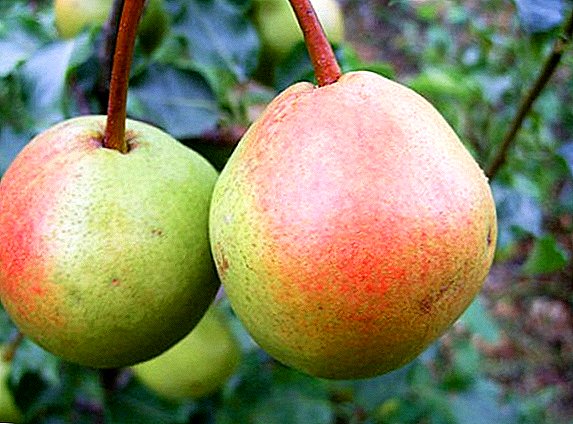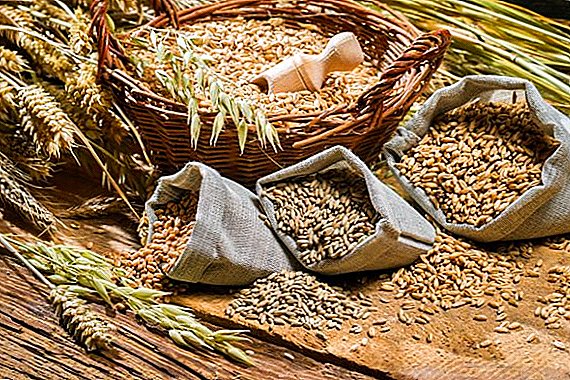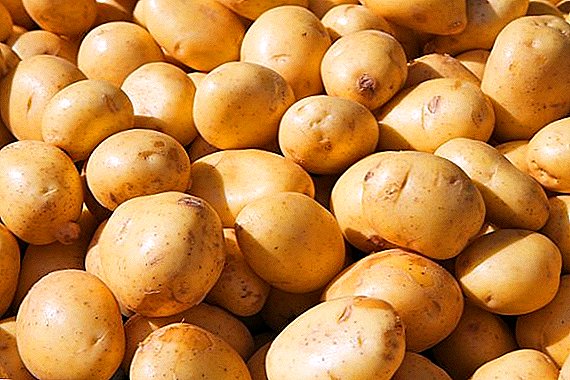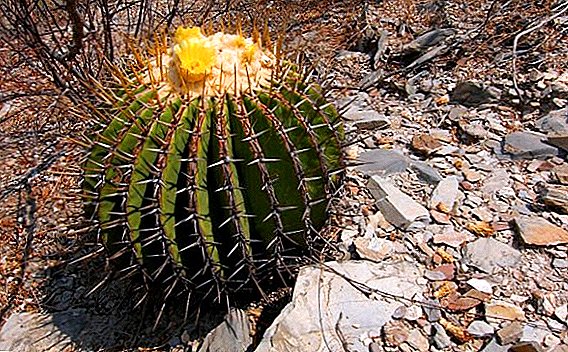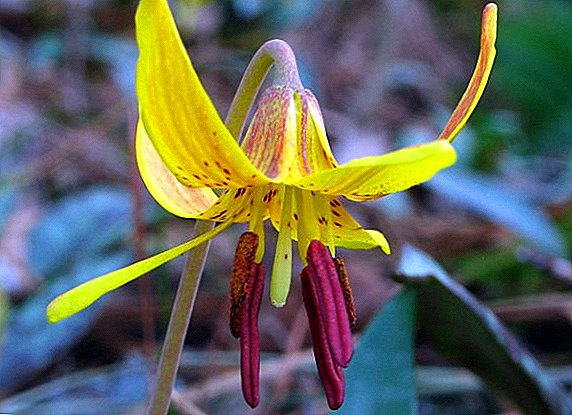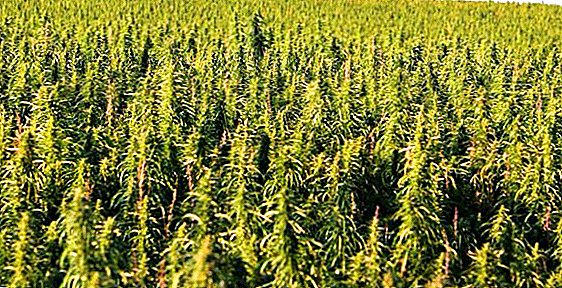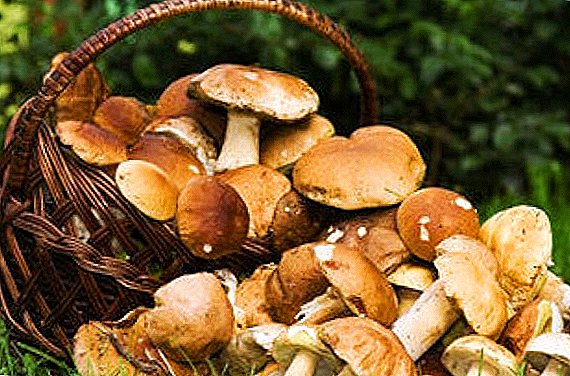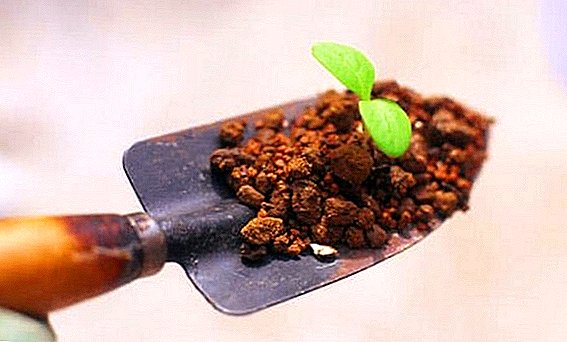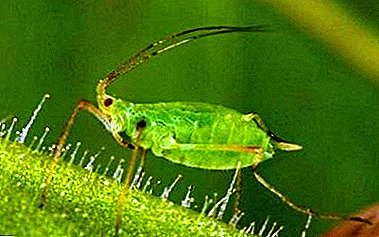
Aphid - a vampire plant world. These tiny phytophages, no longer than three millimeters long, cause significant damage to garden, garden, greenhouse and greenhouse crops. They suck juices from fruit trees and shrubs, damage young twigs, leaves, disfigure fruits. Sticky aphid excrement is a breeding ground for the development of fungal diseases, clog pores, impair the respiration and nutrition of plants.
Insect habitat in nature
Aphid occupies a vast ecological niche. In the natural environment of these insects can be found:
- In the surface environment: it settles on buds, young shoots, fruits of garden, garden crops and weeds.
- In the air: This parasite is not without reason called "air plankton". Adult individuals conquer new territories, spreading through air currents.
- In the soil: a part of insects, down the trunk to the roots of plants and sucking the juice out of them (in more detail about what aphids feed on, we told here). Also, in the late autumn, ants are being dragged by the ants in order to plant them again in the spring around the garden and feast on the sweet secretions of the parasite.
She lives in all climatic zones where there are plants whose sap eats. For example, the distribution area of blood aphids:
- Moldavia
- South of Ukraine.
- Middle Asia.
- Caucasus.
- Western European countries.
- West of the Baltic States.
- Africa.
- America and Australia.
The number of phytophagous species that can occur in a particular area depends on the severity of the conditions and on the richness of the green world.
Comfortable climatic conditions for this insect are moderate temperatures and average humidity. In the cold rainy summer, the population size decreases. In harsh winters, their eggs die when the frost is below 25 degrees.
Unfavorable to the parasite heat and dry air. In the northern and humid areas with a diverse flora, it is more common than in deserts.
Favorable aphid habitats are places where there are few natural enemies (for example, ladybirds), but a large number of ants live. With these insects, the pest has established a mutually beneficial symbiosis, more details about it can be found here.
Where does it come from and why?
 To understand where in the spring on plants in the garden and seedlings in the garden aphid appears, consider the life cycle of this phytophage. Pest life cycle:
To understand where in the spring on plants in the garden and seedlings in the garden aphid appears, consider the life cycle of this phytophage. Pest life cycle:
- Wintering occurs on the trunks of plants in the egg stage.
- In spring, when buds begin to swell and bloom, larvae 0.5 mm in size appear from the eggs. They actively suck the juice from the emerging leaves and flowers. Part of the larvae descend to the roots of the plant.
- Within two weeks there is a development of adults of two types:
- viviparous virgin females: able to produce larvae without fertilization;
- female settlers: they have two pairs of wings, scatter and spread by wind over considerable distances, populating weeds, garden plants, then returning to their original culture again.
Over the summer period, this process is repeated up to 15 times.
- At the beginning of autumn (September, October), the next generation of females and males is born on the host plant, which mate and lay new eggs for wintering.
Attention! A number of insects remain until the spring in the roots.
Knowing the transformation of aphids from spring to autumn, we can confidently say that it appears:
- In the ground - descending from the aboveground part of the plant and clinging to its roots.
- In the garden - temporarily settling on grassy plants in order to return to the original plant again.
- In greenhouses - having got there together with unsterilized garden soil, or having flown through the open transom when airing the room.
To the question "why did you perish?" The only answer is that the plant protection measures against the pest have not been carried out in time.
Features of the pest in different cultures
 What species of these pests, and on which plants most often come across a person?
What species of these pests, and on which plants most often come across a person?
- Green pear-umbrella aphid lives on dill. Its size is about 2.5 mm. In the summer, it migrates from pear trees to a vegetable garden, where it breeds during the summer months. In the autumn, returning to a tree, lays elongated eggs into bark cracks and dies.
Greens spicy plants become unsuitable for use, because of the huge number of insects, stuck around the shoots.
Important! It is possible to find out that this malicious species appeared in the garden by a characteristic sign - damaged young leaves of pears fold in half along the central vein, and an orange spot forms in their middle.
- Cherry aphid has a shiny black cover and does not exceed 2 mm in length. Lays eggs at the base of the kidneys. The larvae that appeared in May are attached to the underside of the leaves. They are deformed, twisted into a lump and the growth of young shoots ceases. Insects hide in damaged leaves.
At the end of June, some insects fly over to weeds (a bed-bed), and come back by autumn. Particularly strong damage is inflicted on young orchards of cherries and cherries.
- In July, the sunflower is attacked by a red-brown thistle aphid. Her rounded, wide body reaches three millimeters. Interestingly, females that appeared in the summer are smaller and painted green. The role of plants - the owners of these insects play stone fruit crops.
The pest infects the leaves and stem of the oilseed, leads to wilting of plants and a drop in yield.
- Tomatoes are subject to the invasion of green peach aphids. It is also called - the greenhouse, which indicates that this pest is common in greenhouses. The life cycle of these individuals begins on fruit trees.
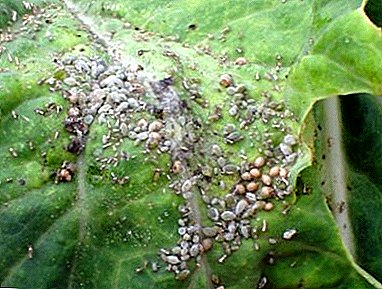 The second winged generation migrates to tomato beds, where it spreads on the back of the leaves of plants. The fruits of tomatoes, as a rule, are not affected, but the dominance of parasites can lead to their grinding.
The second winged generation migrates to tomato beds, where it spreads on the back of the leaves of plants. The fruits of tomatoes, as a rule, are not affected, but the dominance of parasites can lead to their grinding. - Greenhouse aphid also affects lemons. Migrating individuals breed on plants taken out in the summer to the garden or growing on the balcony. Their dominance leads to disastrous leaf fall and damage to the buds.
- The field bindweed, like other weeds, serves as a temporary haven for summer generations of this insect. Weeding is one of the effective methods of pest control.
- Black viburnum aphid strikes shrubs, beloved by many gardeners. In viburnum wrinkled and twisted into a ball of young leaves, preventing the growth of new twigs and inflorescences. Exhausted plants lose frost resistance.Reference. New waves of females spread only in Kalina.
- Cabbage aphid infects cruciferous plants. She spends the winter in the roots of the wild representatives of this family - the shepherd's purse, common colza. In the spring she moves to garden crops. If timely measures are not taken, then all the leaves will be completely covered by the pest. The cabbage turns yellow, dries out and becomes unusable.
- On plum lives aphid, which is called pollinated. Its body is covered with a bluish-white wax fluff. The size of this parasite is 2.5 mm. Unlike her relatives, she does not curl the leaves, but rather thickly covers the plant with a gray wax bloom.
Apricots, almonds, thorns, plums and peaches suffer from the pest. It amazes stone fruit gardens in Russia, North Africa, Western Europe and North America.
In Mexico, there lives the only species of this parasite, which for centuries, mankind not only did not rank as pests, but on the contrary - put it on value in third place, after gold and silver. This insect is called cochineal.
Mexican Indians made aphid powderbreeding on the prickly pear cactus and feeding on the juice of its red fruits. As a result of chemical treatment, carminic acid was obtained from this raw material. This is one of the most ancient dyes, which was used for writing treatises on parchment, and for dyeing carpets and festive clothing.
Carmine in the modern world is recognized as a safe organic dye for the cosmetic and food industries.
About other types of aphids can be found in this material.
A photo
Below in the photo you can see aphids on various garden and garden plants.





Conclusion
Damage caused by aphids leads to weakening of garden and garden plants. and the loss of a significant part of the crop. This can be avoided only systematically and systematically destroying the pest at all stages of its development in all habitats.


 The second winged generation migrates to tomato beds, where it spreads on the back of the leaves of plants. The fruits of tomatoes, as a rule, are not affected, but the dominance of parasites can lead to their grinding.
The second winged generation migrates to tomato beds, where it spreads on the back of the leaves of plants. The fruits of tomatoes, as a rule, are not affected, but the dominance of parasites can lead to their grinding.